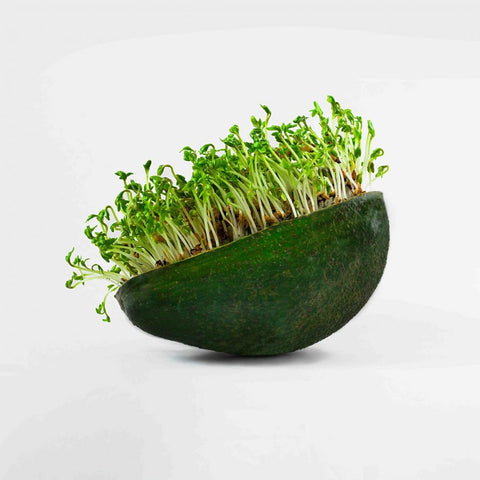If you’ve already taken a look at our dedicated blogs on what microgreens are, how to grow them, and how to cook with them and still can’t find the answers you’re looking for, then hopefully you can find it below! If not, feel free to drop us a message and we’ll get right back to you.
Can Microgreens Be Grown Outside?
Microgreens are delicate and, like all young seedlings, are better protected from the harsh outdoor environment. The heat, sun, and wind can dry them out, and their tender leaves are easy targets for pests. Fortunately, most microgreens do very well indoors as they thrive at room temperatures (70°F to 80°F) and enjoy the partially filtered light that comes through a window. The best place to grow your microgreens is on an indoor windowsill if you have one.
If you grow them outside, follow these steps: ensure it’s not too cold when starting, as seeds have trouble sprouting below 65°F. Avoid harsh environments by setting up in a partially shaded area protected from the wind. If you see flies, caterpillars, or bugs, give the microgreens a thorough rinse before eating (we don’t recommend using pesticides).
Will Microgreens Regrow?

Most gardeners are used to picking a few leaves at a time from their herbs or greens and the plant growing back just fine. While we wish this worked for microgreens, most can only be harvested once. This is because most microgreens only have one set of leaves, so after they’re harvested, there’s nothing left to collect the sunlight needed to grow back. However, there are exceptions. Microgreen shoots, like peas, beans, and lentils, can regrow a couple of times as long as you harvest them above their bottom leaf. The taste starts to fade after the first harvest, but you can usually get these to regrow once or twice with decent flavor and texture.
How Long Will Microgreens Last?

As we covered before, it’s best to harvest your microgreens as needed while they’re still growing. You typically have about a week between your first and last harvest. If you can use them up in that time, you’ll enjoy the freshest and healthiest microgreens. However, if you still have some left, they will last another week or two given the right conditions. To properly store them, place a folded paper towel in the bottom of an airtight container, then loosely place the microgreens in the container and seal it with the lid. Store it in the bottom shelf or produce drawer of your refrigerator, away from the cool air vent where temperatures tend to fluctuate.
Does Using Organic Microgreen Seeds Matter?
While organic certification is far from perfect, it’s usually the most environmentally friendly and least chemically intensive option. When growing microgreens, using organic seeds is particularly important. Growing microgreens requires hundreds of seeds that are very close to the edible part, unlike growing “adult” plants where you get a good harvest from just a few seeds. This has a couple of important implications. First, using lots of seeds means lots of farmland to produce them—using organic microgreen seeds ensures that more land is managed organically. Second, since you’re eating the plants soon after they’ve sprouted, a seed might get mixed up in your harvest. It’s reassuring to know the seed was produced organically.
Want to learn more about Microgreens? Read our more in-depth blogs on the following topics:
- What Exactly Are Microgreens Anyway?
- Different Types of Microgreens – Where To Start?
- How Anyone Can Grow Microgreens At Home
- Benefits of MicroGreens: It’s Not The Size That Counts
- How to Use Microgreens In Your Salads, Smoothies, Snacks and More
Now that you know all there is to it, nothing is stopping you from growing your own microgreens garden. Shop our beginner-friendly Microgreens Kit below. You can also check out all our other microgreen kits here.









There are no comments for this article. Be the first one to leave a message!